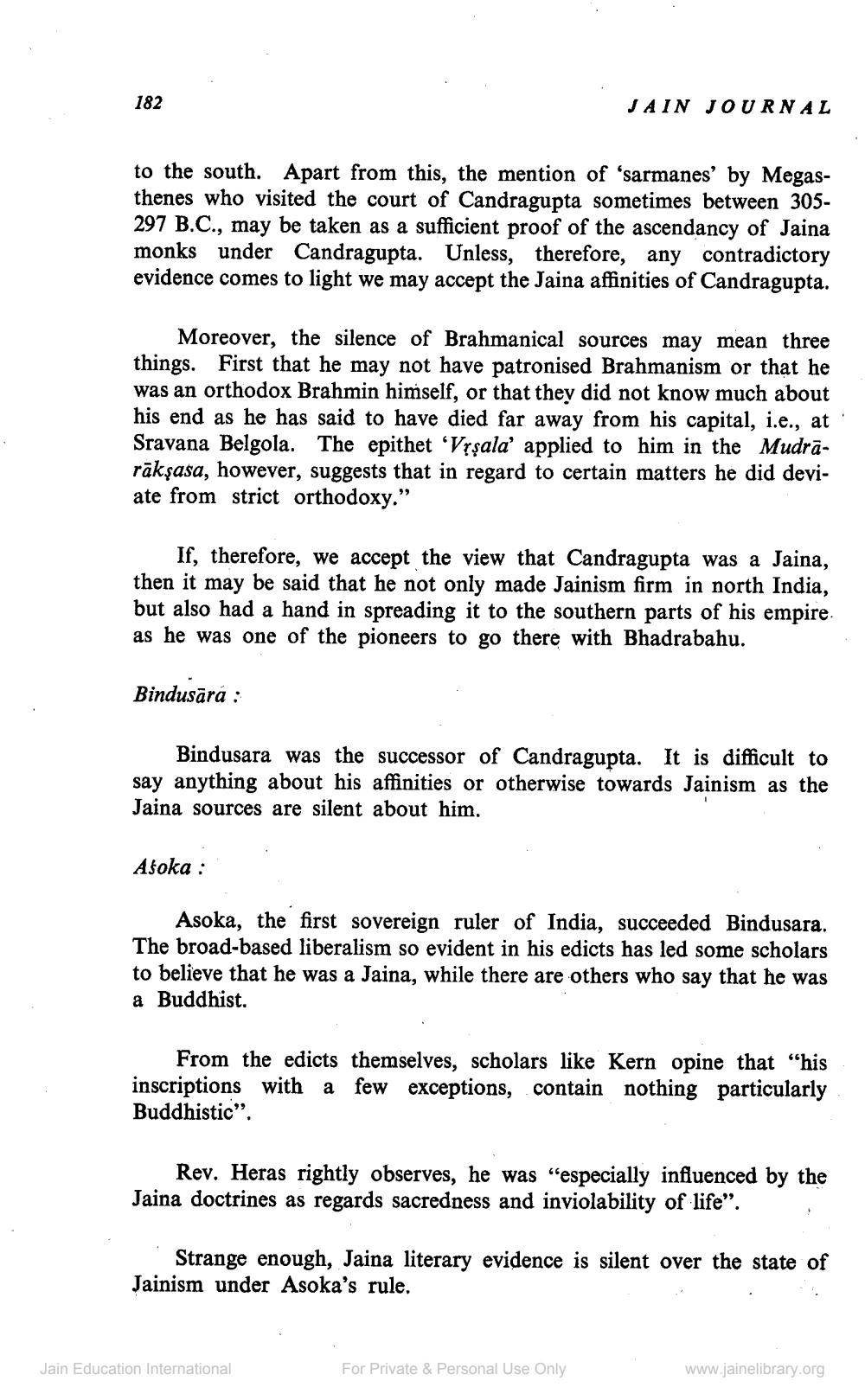________________
182
to the south. Apart from this, the mention of 'sarmanes' by Megasthenes who visited the court of Candragupta sometimes between 305297 B.C., may be taken as a sufficient proof of the ascendancy of Jaina monks under Candragupta. Unless, therefore, any contradictory evidence comes to light we may accept the Jaina affinities of Candragupta.
JAIN JOURNAL
Moreover, the silence of Brahmanical sources may mean three things. First that he may not have patronised Brahmanism or that he was an orthodox Brahmin himself, or that they did not know much about his end as he has said to have died far away from his capital, i.e., at Sravana Belgola. The epithet 'Vrşala' applied to him in the Mudrarākşasa, however, suggests that in regard to certain matters he did deviate from strict orthodoxy."
If, therefore, we accept the view that Candragupta was a Jaina, then it may be said that he not only made Jainism firm in north India, but also had a hand in spreading it to the southern parts of his empire. as he was one of the pioneers to go there with Bhadrabahu.
Bindusāra :
Bindusara was the successor of Candragupta. It is difficult to say anything about his affinities or otherwise towards Jainism as the Jaina sources are silent about him.
Asoka :
Asoka, the first sovereign ruler of India, succeeded Bindusara. The broad-based liberalism so evident in his edicts has led some scholars to believe that he was a Jaina, while there are others who say that he was a Buddhist.
From the edicts themselves, scholars like Kern opine that "his inscriptions with a few exceptions, contain nothing particularly Buddhistic".
Rev. Heras rightly observes, he was "especially influenced by the Jaina doctrines as regards sacredness and inviolability of life".
Strange enough, Jaina literary evidence is silent over the state of Jainism under Asoka's rule.
Jain Education International
For Private & Personal Use Only
www.jainelibrary.org




